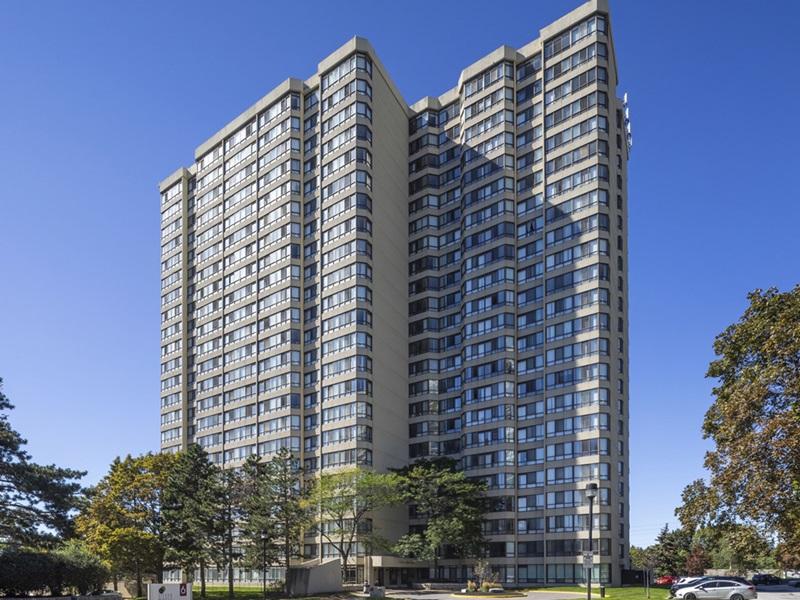
Micheal Dal Bello, senior vice-president real estate for AIMCo. (Courtesy AIMCo)
The pandemic accelerated turbulence in the retail real estate market and landlords and investors had to rise to the challenge, speakers said at the recent 2021 Edmonton Real Estate Forum.
During a wide-ranging discussion, the industry executives offered perspective on supply-chain issues both for day-to-day retail operations and retail development, as well as issues facing enclosed malls, suburban retail and the landlord-tenant relationship.
Their comments highlighted a number of trends created or accelerated by the challenging past 15 months in the industry.
Grocery
While grocery sales would seem to be a bright spot despite the pandemic, the real estate and building side had its challenges, said Harp Brar, senior director, real estate development, Loblaw Companies.
Brar said his firm opened five supermarkets during the past 18 months in Alberta but there were challenges involved in construction. For instance, the construction site on a new Superstore in St. Albert, north of Edmonton, had to shut down for a couple of weeks because of a COVID-19 outbreak.
Operating and maintaining stores proved more expensive because of the pandemic, too, he said.
”The first 12 months were balancing top-line revenue against costs. And in a lot of these examples, the costs outstripped the revenues,” said Brar.
He said a COVID-19 outbreak at a store could result in a deep clean over a 12-hour period costing between $5,000 and $25,000.
Disruption in supply chains is causing headaches in terms of ordering fixtures and equipment for stores. What used to take a four- to six-week lead time now takes four to six months.
Brar said Loblaw’s online grocery business doubled in a year, which necessitated some pivoting as well.
Landlord-tenant relationship
Kim Wingerak, vice-president operations, Western Canada, RioCan REIT, said her firm has pivoted to help its retail tenants survive, sometimes with rental concessions and deferrals. RioCan’s strategies have paid off with 94 per cent collection rates for Q1 2021.
“We continue to support tenants and customers where we can without focusing on the black and white of the leases, which used to govern our relationships,” said Wingerak.
Several speakers mentioned the need to be flexible about space during the pandemic, particularly in providing curb-side pickup stalls and creating patios for restaurants and bars.
Micheal Dal Bello, senior vice-president real estate for AIMCo, urged investors to be patient, noting: “The economics on the tenant you have is way better than thinking there’s another one coming down the road.”
Enclosed malls
“Alberta has been lucky. We’ve had reduced capacity but not really closed (malls),” said Dal Bello.
He added AIMCo operates three centres in Eastern Canada that were shuttered during lockdowns.
Dal Bello was bullish on retail prospects, saying he thinks good locations which have been vacated will be tenanted again. Within the AIMCo portfolio, he noted, there are also tenants who want to grow and lease space vacated by other retailers.
Despite the “triple whammy” of already declining retail, plummeting oil prices in Alberta and COVID-19, John McKinlay, CEO Canada for LaSalle Investment Management, said negative reactions to retail may be overblown. His firm is a part owner in the Edmonton City Centre mall.
“I don’t think you can call for the death of fortress retail. The mushy middle is another discussion,” said McKinlay.
Big Box and the Burbs
Kevin Leon, president of Crestpoint Real Estate Investments, said although there is a shortage of players to take up larger boxes, in the 20,000- to 30,000-square-foot range there is potential for hybrid retail/warehouse buildings playing into the “bricks-and-clicks” trend of multichannel retail.
Jarrett Thompson, chief operating officer of Cameron Development Corporation, said his company has benefited from the work-from-home trend created by COVID-19. He said people are spending closer to home.
“As a suburban developer and landlord, we seem to have gotten a bigger piece of a small pie,” said Thompson.
He said there appears to be pent-up demand for retail and entertainment facilities shuttered by the pandemic. Membership sales have been strong for a 70,000-square-foot fitness facility in a Southwest Edmonton development which has yet to open.
Development trends
Developers constructing retail and mixed-use projects in Edmonton and surrounding areas are running into the same problems as developers around the country with supply shortages and skyrocketing building costs.
However, Thompson said Cameron’s strategy early in the pandemic resulted in lower costs due to the uncertainty of the situation.
The Alberta government didn’t shut down construction during the pandemic.
“A lot of our competitors were preoccupied with dealing with existing assets and managing their way out of it,” said Thompson. “We kept our heads down and focused on development. We didn’t take our foot off the gas.”
He said that advantage has now subsided as supplies become scarce.
“We need to be sure we have flexibility on drop-dead dates or provisions in leases to push it out if procuring resources is difficult.”










